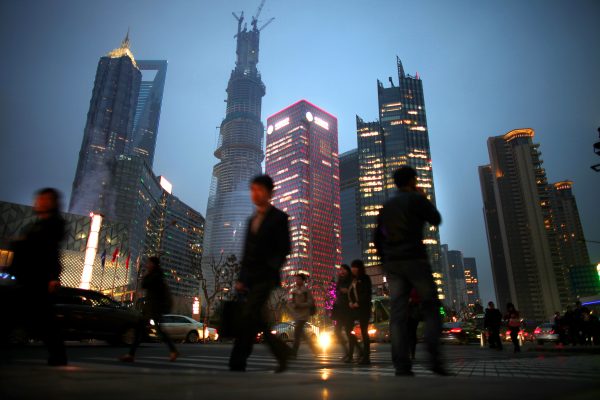But GDP growth fell consecutively in the first three quarters of 2019, causing concern for Beijing. In November, the government announced 2 trillion RMB in tax and fee cuts and 2.15 trillion RMB in local government special bond issuance to stimulate the economy. According to the National Bureau of Statistics, the economy showed some positive signs of recovery. In December, a stage one agreement to put a hold on the trade war with the United States boosted market sentiment. GDP growth is expected to improve in the last quarter, helping the annual GDP growth reach the official target range of 6–6.5 per cent.
Reaching an agreement with the United States was one of the most important developments of 2019. The first phase of the deal entails China buying more high-quality US agricultural products and allows US financial services to enter the Chinese market. The United States will halve the 15 per cent tariff and postpone further tariffs.
Financial markets were somewhat relieved to see the trade deal but the trade war has taken a toll on the US–China relationship, on global supply chains and overall business confidence. It has become clear that the conflict between the United States and China is an inevitable product of the hegemonic struggle between a dominant existing economic power and an emerging one.
There was also some progress in financial sector reform in 2019. In August, the People’s Bank of China introduced a market-based mechanism for the Loan Prime Rate — a benchmark interest rate that commercial banks charge their best clients and which reflects market demand for credit. In September, the quota on qualified foreign financial institutional investors and Renminbi qualified foreign financial institutional investors was removed. In theory, this allows licensed international investors to invest unlimited amounts in stocks and bonds. The actual number of foreign investors is still far from the quota.
The development of the Yangtze River Delta is also expected to accelerate the opening of China’s financial sector. Greater foreign access to the banking industry and stock and bond markets is expected to be granted through this region first.
2020 is significant for China because it is the final year of the 13th Five Year Plan. It is also the year the government is expected to deliver on its longstanding promise of doubling 2010 GDP and household income. Amid an economic slow-down, reaching the GDP growth target is important not only for maintaining confidence in the Chinese economy, but also to preserve the credibility of the Communist Party.
While uncertainties around the global economy persist, China is likely able to navigate these external uncertainties and lead the economy to meet its growth targets. The crucial question is what policy option will be used to achieve this goal. It would be unfortunate if economic development was again pursued by massive monetary and fiscal stimulus — something that has been used repeatedly in the past, and with diminished effectiveness and increased costs each time.
The only policy response to end pessimistic expectations for the Chinese output train and steer the Chinese economy onto a track of sustainable long-term growth is reform — pushing forward financial sector and SOE reform and introducing functioning market mechanisms.
SOE reform should be a policy-making priority. But the current SOE reform agenda is worrisome — in 2015, a major SOE reform agenda was released but the guidelines excluded a decisive role for markets in resource allocation. Instead, the government’s agenda combines corporate governance with the institutionalisation of Party leadership within SOEs, with further reforms to make SOEs ‘stronger, better and bigger’. This is an unfortunate step backwards.
It is impossible to ensure a level playing field for all forms of ownership under the current reform agenda. For example, SOEs are still preferred over private firms when loan applications are considered in commercial banks due largely to the implicit government guarantees. Without a level playing field and meaningful competition, it is hard to address overcapacity problems and eliminate zombie firms.
Another key challenge for the Chinese economy is the ever-rising debt of local governments. Many local governments face increasing fiscal strain as their revenues do not cover expenditure needs — much of which is in infrastructure investment that growth relies on. The introduction of local government special bonds has not yet eased the difficulty in raising capital for infrastructure projects.
The trade war with the United States is another major challenge that China will continue to face. China has become the world’s second-largest economy and its rise is naturally causing disruptions to the existing global economy. Amid a rise in anti-globalisation and nationalism in the international environment, the Chinese leadership must develop long-term strategies to manage relations in a multipolar world and to ensure China’s rise is as smooth and beneficial as possible to the world.
In 2012 the Chinese government reiterated two Centennial Goals. The first goal of doubling 2010 GDP and per capita income will likely be reached when the Communist Party celebrates its centenary in 2021. But the second goal of transforming China into a developed country by 2049 is still far from reach. Reform is the key.
Jiao Wang is Research Fellow at the Melbourne Institute of Applied Economic & Social Research, the University of Melbourne.
This article is part of an EAF special feature series on 2019 in review and the year ahead.

